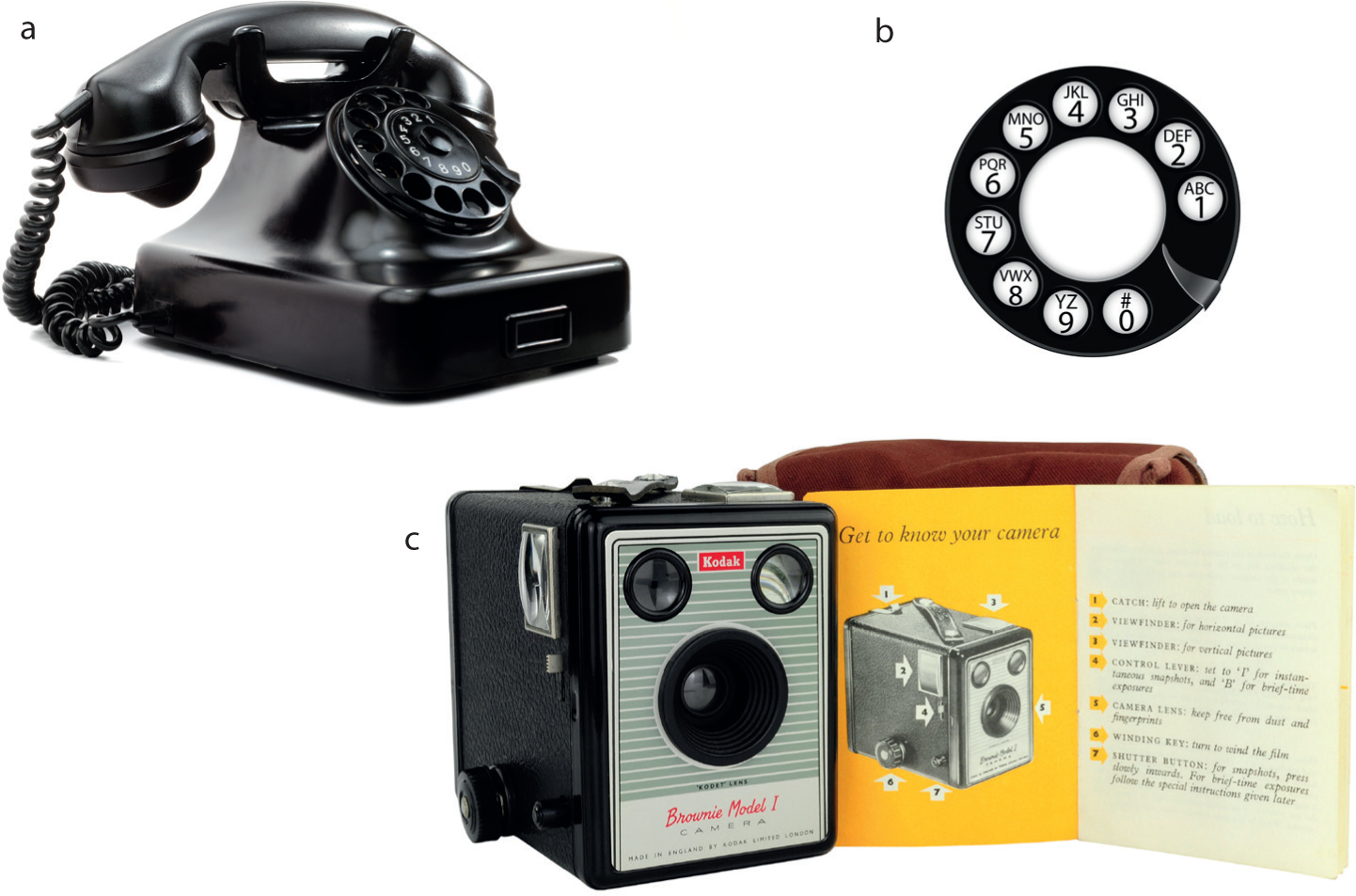Article

In the past, people of a certain generation (mine!) had a phone attached to a land line, and a camera into which a reel of film was inserted upon which to record the images. Incorrect focus or inappropriate directioning of the camera resulted in a wasted film! For the benefit of young readers, illustrations can be seen in Figure 1!

Today, I don't need to tell readers that these functions are combined into one device, the ubiquitous mobile phone – with functions as diverse as phone (obviously!), payment device, clock, alarm, map reader, calculator, game host, music store, text messager, device for watching/downloading videos, and many more.
In the past, dentists of a certain generation thought that a bonding agent was a bottle of unfilled resin (often methylmethacrylate and, later, BisGMA). This bonded to etched enamel, but not to dentine. I recall using an early dentine bonding agent that comprised five different bottles of reagent, to be used in a certain order, but not numbered appropriately. As a result, in those days, the chance of successful bonding (even if the material was efficacious) was low! The early understanding of the smear layer (that layer on the instrumented dentine surface principally containing hydroxyapatite, collagen debris and bacteria) was poor, insofar that manufacturers developed reagents that were good wetting agents, thereby wetting and penetrating the dentine surface, but, alas, they later discovered that the smear layer was not well attached to the underlying dentine, thereby rendering the bond strengths to dentine of this group of early bonding agents suboptimal, very poor being probably being more truthful.
It is probably wise to start by mentioning Buonocore's early milestone in establishing adhesive dentistry by achieving a bond to enamel by etching it with phosphoric acid (in his case 60%, we use 30%) and applying a resin.1 Bonding to dentine moved on through the so-called generations, the first dating back to the 1960s, with the each generation generally classified according to the number of bottles/stages and chemistries. However, this classification fell into disrepute because of confusion, with one expert calling a certain bonding agent a third generation, while another was calling it a fourth, and someone else a fifth! A further milestone was Nakabayashi's introduction of the term ‘hybrid layer’2 in 1982, which he discovered using transmission electron microscopy (in itself a milestone at the time), leading to understanding of the means by which collagen of the etched dentine was infiltrated micromechanically with the resin in the bonding agent to give a layer at the dentine/resin interface. Following the ‘generations’, a more recently developed and more readily understood classification3 was suggested, this being etch and rinse (in which the dentine was etched with phosphoric acid and this then rinsed off before applying the bonding agent) or self-etch, in which the reagent in the bottle was designed to carry out the etching as well as the bonding. Technique-wise, this held the obvious advantage of requiring only one bottle (therefore no need to worry about using the bottles in the incorrect order), but suffered from suboptimal bond strengths to unetched enamel, with resultant enamel margin staining over time being a disadvantage. On the other hand, the etch and rinse materials could be associated with post-op sensitivity if the dentine was etched for an excessive time: in that regard, when placing resin composite restorations in posterior teeth, a recent publication4 has come down firmly against etching the dentine when using universal adhesives as a means of reducing the risk of post-op sensitivity, given that the universal adhesives can be used in whichever etch mode the clinician deems appropriate.
Which brings us up to date! The latest universal dentine adhesives containing the resin 10-MDP (which provides chemical bonding to hydroxyapatite, thereby providing a belt and braces approach to the micromechanical hybrid payer) have been considered, in several recent reviews3,5,6 to be an advance in bonding. A recent publication looked at them more closely, finding that they provide a good laboratory bond strengths to dentine,5 but also good clinical performance in Class V restorations (the ultimate test for a dentine adhesive).5 This is a long way removed from the early bonding agents. In addition, some also achieve a bond to (HF-) etched ceramic, sandblasted metal, can act as root surface desensitizers, can bond pit and fissure sealants, can provide a protective coating for glass ionomer restorations, and, moreover, can be used for bonding resin composite materials to dentine using whichever mode of etching that the clinician deems appropriate. This is a change from previous materials which were type specific, ie an etch & rinse adhesive would not work if the dentine was not etched and the so-called self-etch materials would not work optimally if the dentine was etched. Handling of the latest materials has also been considered excellent in practice-based handling evaluations.7,8,9,10 One material (Scotchbond Universal Plus, 3M Espe, Seefeld, Germany) has also been considered by its manufacturers to provide a good bond to caries-affected dentine.11 The universal adhesives of at least two manufacturers will also provide a bond to dentine and ceramic when used in conjunction with the same manufacturer's resin luting cement. One (Scotchbond Universal Plus) contains the chemical that facilitates its polymerization, meaning that it does not have to be polymerized prior to placement of the indirect restoration, thereby avoiding the risk of pooling at internal angles and resultant imperfect fit of the restoration.11 All of the above multiple functions are contained in one bottle, indeed, one drop!
The mobile phone is a truly multifunctional device, but it can weigh up to 200 grams, with a weight of around 150 g to 170 g being considered more manageable. Does it not therefore seem incredible that such a lot of dental multifunctionality can be contained in just one drop weighing approximately 0.05 grams, a fraction of the weight of a mobile phone?! Weight for weight, one drop of universal dentine adhesive wins hands down!

